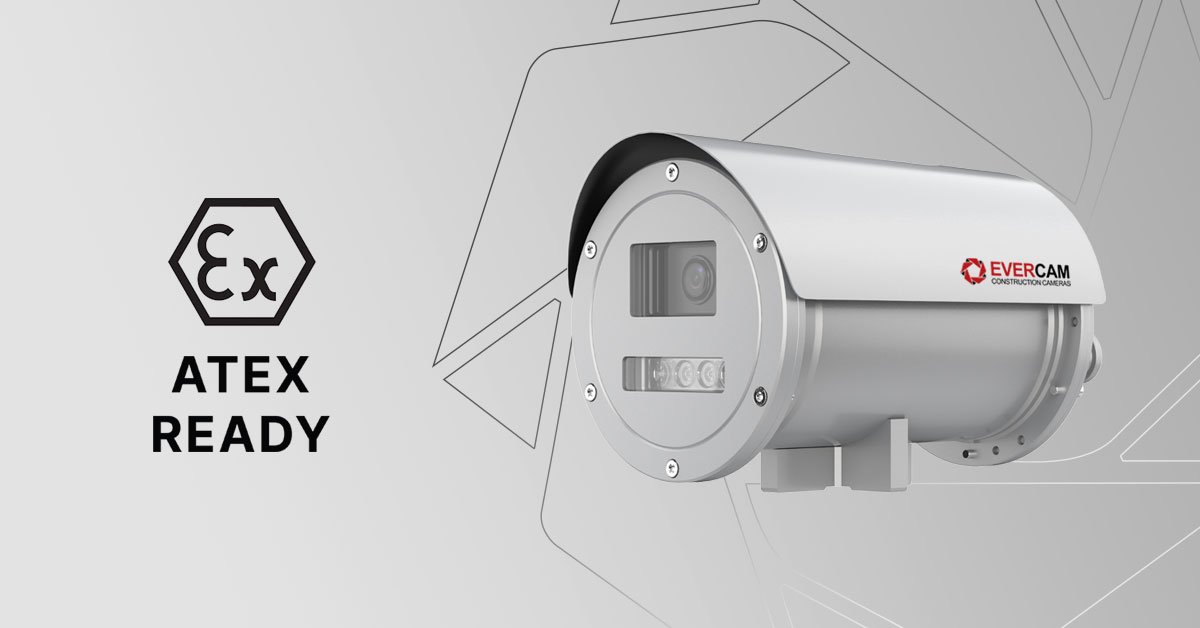
A construction site is constantly changing as a structure is erected. There are diggers, supply vehicles, and lifting equipment that all operate on an uneven surface in most situations. A construction site is hazardous because of the nature of work that is performed on it, and the kind of equipment that is used there. There is a big probability of accidents at a construction site, and this industry has the highest rate of fatal accidents.
As much as the construction site is hazardous in its nature, there are other types of construction sites that require more attention when it comes to health and safety because they are ATEX. ATEX generally refers to the hazard of explosive atmospheres occurring in the workplace due to the presence of flammable gases or combustible dust mixed in the air, which can give rise to the risk of explosion. Such job sites include gas station construction sites, oil pipeline maintenance sites etc.
Having a construction camera on these job sites means better visibility of any potential problems. Preventing potential issues means better project efficiency and faster completion times; something that is of great importance when the project has to be done fast. Also, it can be crucial for quality control, as continual surveillance ensures all materials, devices, and procedures are implemented correctly. By monitoring the job site, you can prevent fraud, theft, and abuse of materials and equipment.
We recently installed a camera on a major ATEX construction project. Our client thought construction cameras were absolutely essential to install on their ATEX site. This client needed visibility on its existing petrochemical processing facilities turnaround projects. Since the processing areas have different types of work zones, we could not use the normal Evercam standard construction cameras but rather went for an intrinsically safe ATEX camera. The ATEX Cameras and ATEX Junction boxes are used on this site instead of Evercam’s Standard Commercial 12 MP IP Cameras with its IP66 Rated Junction Box.
With the availability of the ATEX Equipment Solution and Standard Equipment Solution, Evercam is able to give a wider variety of construction projects access to visual data, such as petrochemical projects. Having an ATEX camera for visual documentation in hazardous areas helps users become more effective, and reduces human errors. It also acts as a way to monitor and review incidents after they may occur, which can make way for new procedures to be put in place to prevent this from happening again.
Some of the factors to consider with a hazardous site that needs monitoring or visual documentation include; what type of images should be taken? What are the light conditions on the site? Who is the end user? What is the ideal size and weight of the camera? etc.
Use cases can vary from having to do simple inspection and documentation images in the field, to making full time-lapse videos in hazardous areas.
Explosive atmospheres can be caused by flammable gases, mists, vapours or by combustible dust, in combination with oxygen. With a certain concentration level, all that is needed to cause an explosion is a source of ignition. Having good images and videos is beneficial in both diagnosing, planning and reporting. Not having to get hot work permits is also a benefit of using ATEX cameras instead of normal IP cameras.
Choosing the right ATEX camera will therefore save you both time and costs. Interested to discover more ways that Evercam Construction Cameras can help you during your next project?